1. Walk-In Pantries
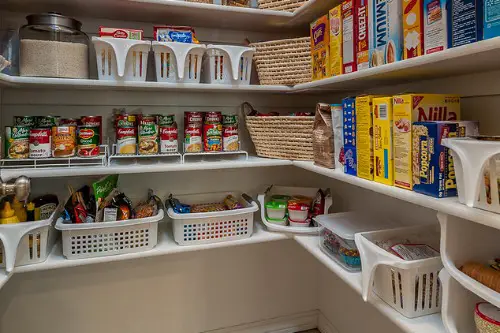
Once a nice-to-have, walk-in pantries have become a subtle sign of space—and by extension, privilege. They signal that the kitchen is large enough to dedicate square footage to storage, something not possible in most apartments or smaller homes. It also implies a lifestyle that includes bulk buying, specialty ingredients, and the luxury of organization. A well-stocked pantry isn’t just practical—it’s aspirational.
In design circles, pantries are now being styled like mini showrooms, with labeled jars, matching baskets, and even wallpaper. It’s not just about storing food—it’s about displaying abundance. The more curated the pantry, the more it signals time, money, and space to spare. It’s domestic status, neatly shelved.
2. Mudrooms
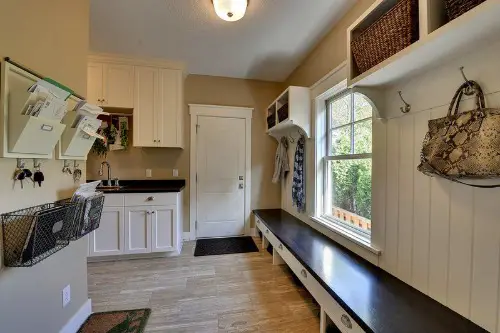
A dedicated mudroom used to be a rural or suburban staple, but now it’s a quiet flex in modern home design. It suggests a home large enough to have a transitional space between outdoors and in—something that’s simply not feasible in most urban dwellings. It also implies a lifestyle with kids, pets, or outdoor hobbies that require gear and space to manage it. Function meets form in a way that quietly says, “We have room for this.”
Today’s mudrooms often include built-in cubbies, custom cabinetry, and even laundry zones. They’re not just practical—they’re polished. And their presence hints at a home designed for comfort and control. It’s the kind of feature that whispers wealth, not shouts it.
3. Second Living Rooms (or “Snugs”)

Having a second living space—whether it’s a den, a snug, or a media room—is becoming a subtle class marker. It implies that the main living room is for hosting, while the second is for retreating. That kind of spatial flexibility is a luxury, especially in cities where square footage is at a premium. It’s not just about space—it’s about lifestyle segmentation.
These rooms are often cozier, darker, and more relaxed, with plush seating and layered lighting. They’re designed for reading, binge-watching, or quiet conversation. The message is clear: we don’t just live here—we unwind here. And we have the space to do both.
4. Laundry Rooms with Counter Space

A washer and dryer used to be the upgrade. Now, it’s about having a full laundry room—with folding counters, drying racks, and even built-in ironing stations. It signals not just space, but time and attention to domestic detail. It’s a room that says, “We don’t just do laundry—we do it well.”
These spaces are often styled like mini boutiques, with decorative jars for detergent and art on the walls. It’s a far cry from the basement setups of the past. A beautiful laundry room is a quiet nod to a life with fewer constraints. It’s utility, elevated.
5. Designer Light Fixtures
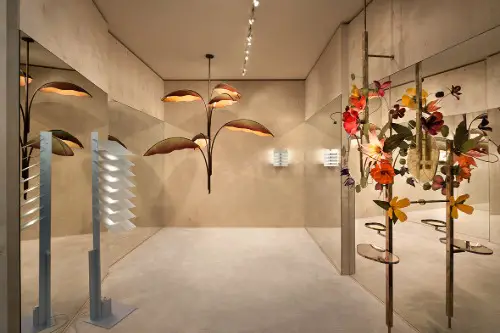
Lighting has become one of the most telling design details in a home. A sculptural pendant or artisan sconce can signal taste, access, and disposable income without saying a word. These pieces are often sourced from boutique brands or high-end retailers, and they’re rarely chosen by accident. They’re functional art—and they’re priced accordingly.
Even in modest homes, a statement light fixture can shift the entire perception of the space. It’s a subtle way to say, “I know design.” And in a world where aesthetics are currency, that knowledge carries weight. Lighting is no longer just about illumination—it’s about identity.
6. Integrated Appliances
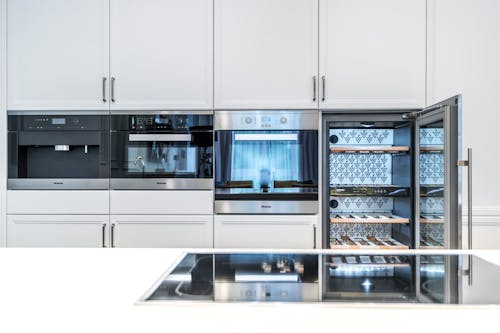
Panel-ready refrigerators, hidden dishwashers, and built-in coffee systems are becoming the new standard in high-end kitchens. They create a seamless, minimalist look that’s both sleek and expensive. These appliances often cost more than their visible counterparts, and they require custom cabinetry to install. It’s a quiet signal of both wealth and taste.
The appeal is in the understatement—nothing flashy, just flawless integration. It’s the kind of design that doesn’t need to announce itself. And that’s exactly the point. Invisibility, in this case, is a luxury.
7. Dedicated Home Offices
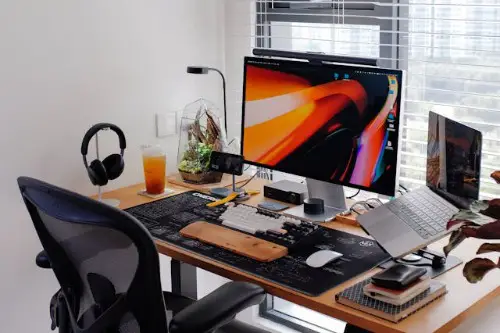
What used to be a spare bedroom with a desk is now a fully outfitted workspace—with built-ins, soundproofing, and designer chairs. A dedicated home office suggests a job that allows remote work, which often correlates with white-collar professions. It also implies a home large enough to sacrifice a room for work. In the post-9-to-5 world, it’s a new kind of status symbol.
These spaces are often styled with intention—art on the walls, curated bookshelves, and high-end tech. It’s not just about function—it’s about projecting professionalism. A beautiful home office says, “I work from home, and I do it well.” It’s career clout, expressed in square footage.
8. Outdoor Living Rooms
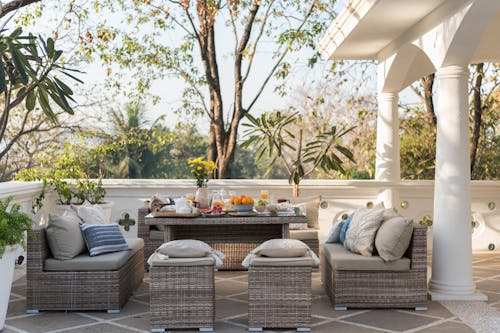
A patio with a grill is one thing—but a full outdoor living room with a sectional, fire pit, and weatherproof speakers is another level entirely. It suggests not just space, but leisure time and a climate that allows for extended outdoor living. It’s a lifestyle upgrade that quietly says, “We entertain.” And we do it in style.
These spaces often include outdoor kitchens, mood lighting, and even rugs and throw pillows. They blur the line between indoors and out, creating a sense of abundance and ease. It’s not just a backyard—it’s a destination. And it speaks volumes without saying a word.
This post 8 Home Features That Are Quietly Becoming Class Markers was first published on Greenhouse Black.
